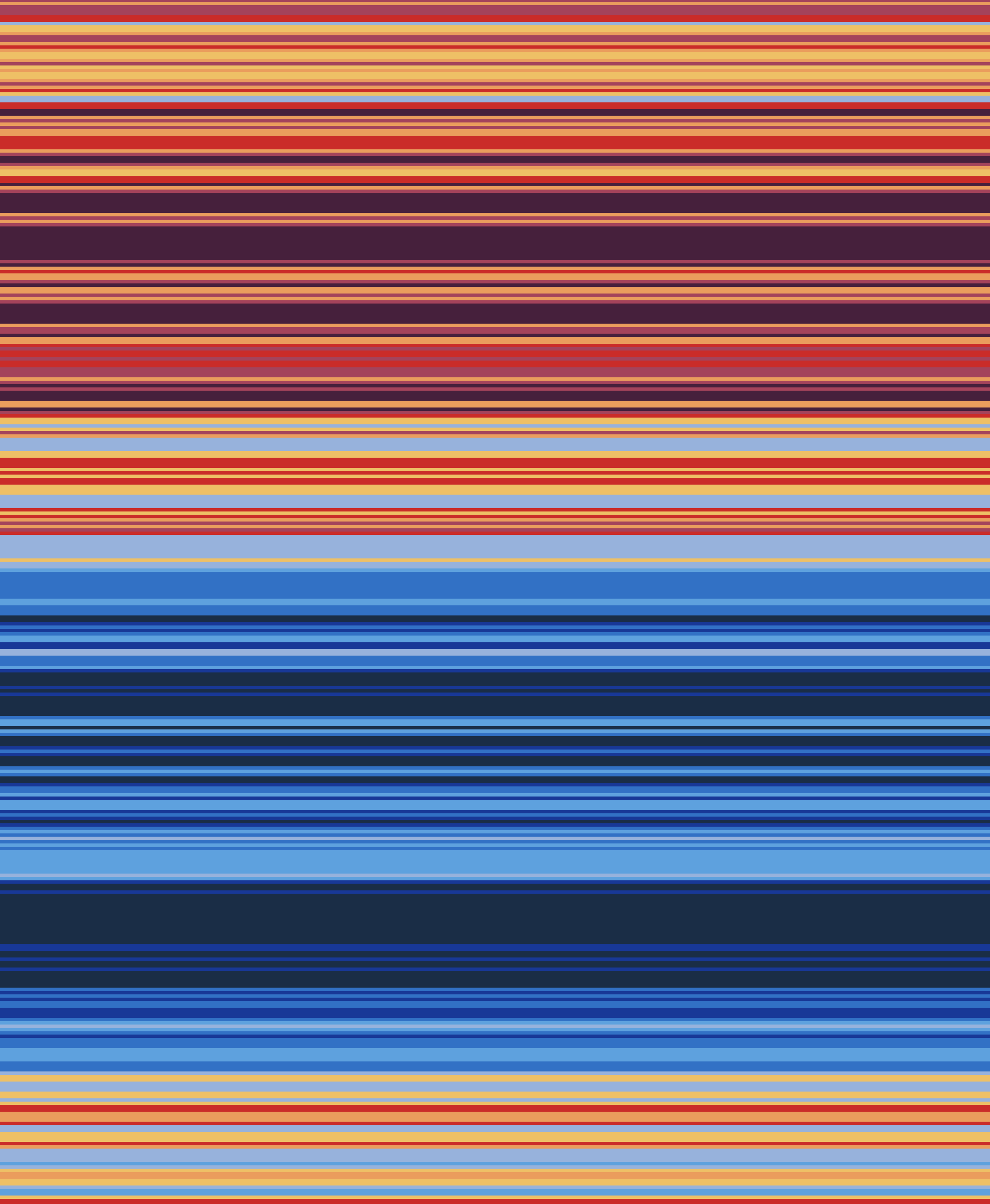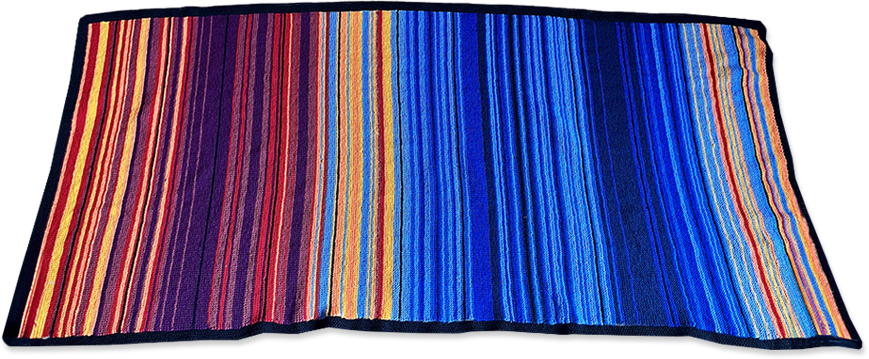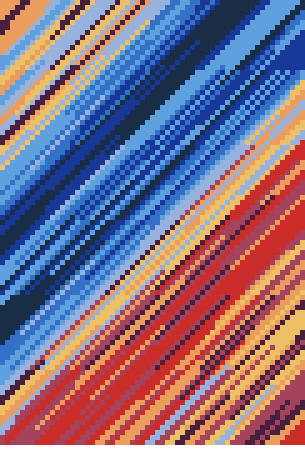
What is a Temperature Blanket?
A temperature blanket is a crocheted or knit project which uses weather data to create a beautiful, creative, and cozy work of art! Using various colors of yarn, it shows how the temperature of a place changes over time. Each row or section of a temperature blanket represents a different day of the year. Temperature blankets are unique and completely customizable.

Temperature blanket by symea
These 366 rows of yarn represent the temperature in Göppingen, Germany from May 15, 1943 to May 14, 1944!
Want help making your own temperature blanket? See How to Plan a Temperature Blanket.
Yarn Colors & Gauge
Any yarn colors can be used to create a temperature blanket. Usually, people choose between 6 and 18 different colors of yarn, but the number of colors is totally up to the individual making the project. Each color is then assigned a temperature range, making what is called a temperature gauge.
Example of a temperature gauge:
Hobbii - Amigo
Christmas Red
From
96°
To
76°
Hobbii - Amigo
Marsala
From
76°
To
71°
Hobbii - Amigo
Bordeaux
From
71°
To
66°
Hobbii - Amigo
Bright Orange
From
66°
To
62°
Hobbii - Amigo
Egg Yolk
From
62°
To
57°
Hobbii - Amigo
Sky Blue
From
57°
To
49°
Hobbii - Amigo
Cornflower
From
49°
To
42°
Hobbii - Amigo
Cobalt Blue
From
42°
To
38°
Hobbii - Amigo
Royal Blue
From
38°
To
35°
Hobbii - Amigo
Navy Blue
From
35°
To
4°
Weather Data
People either get historical weather data or track the current temperature over time. Then the yarn corresponding to each day's temperature is used in it's place in the project. For example, if the day's temperature is 36°, then according to the temperature gauge above, the Royal Blue yarn would be used for that day's row in the temperature blanket.
Project Pattern
There are countless options for a temperature blanket pattern. A typical project has one row for each day, but zigzags, squares, diagonal designs, or other patterns can be used.
Examples of different types of patterns:

Chevron Pattern

Corner to Corner Pattern

Squares Pattern

Daylight Rows Pattern
Variations
There are many other ways to customize a temperature blanket:
- - Other weather events besides the temperature, like rain or snow, incorporated into the design
- - Sections grouped by weeks or months
- - More than one location
- - A scarf, rug, or sweater instead of a blanket!
Resources
Here are some resources for inspiration, tips, and more information about temperature blankets:
- temperature-blanket.com (this site) - get weather data, choose yarn colors, and preview your design
- wunderground.com – weather data
- 17 Temperature Blanket Ideas and Alternatives [FREE Patterns] from favecrafts.com – inspiration and patterns
- Temp Blanket Tracker (Google Doc) – temperature tracking, color gauges
- reddit.com/r/temperatureblanket/ – community discussion, project help, inspiration
- Temperature/ Weather Blanket! Facebook Group – community discussion, project help, inspiration
Want help making your own temperature blanket? See How to Plan a Temperature Blanket.